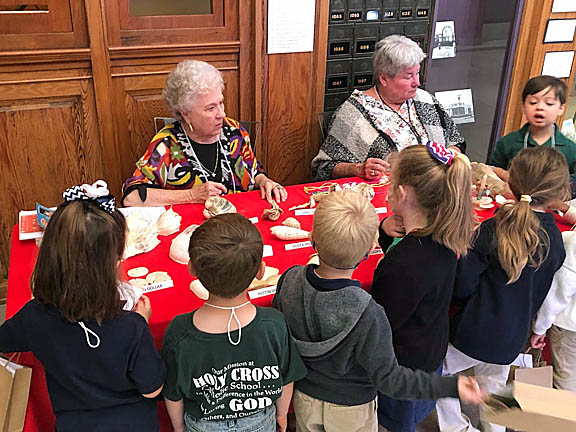|
|
||
|
Visitors traveled through several "camps" in the
style of the Karankawas as they moved to various areas along the
Gulf Coast.
|
||
|
First stop was the Matagorda County Museum
Karankawa exhibit to learn about the Karankawa way of life including
food and clothing, or lack thereof. Each JA received a small bag of
native pecans like the Karankawas ate. |
||
|
Displays of arrowheads were found at Camp Arrowhead where each JA received an arrowhead of their own to take home.
|
||
|
At Camp Alice, each JA heard the story of Alice Williams Bridges Oliver who befriended the Karankawas who camped on her father's land near Collegeport in Matagorda County and recorded over 500 of their words. After losing her list as an adult, she was able to recall about 100 of the words and her list is still used today by Karankawa researchers. They learned the Karankawa word for dog was KISS, so each JA stopped by the "kissing booth" to choose a KISS for their bag.
|
||
|
At Camp Count, each JA learned how to count in
the Karankawa language and took a counting card to add to their bag.
|
||
|
JA participants viewed shells from Matagorda
Beach that Karankawa children would have collected in the 1800s.
They watched a short
|
||
|
Karankawa were known to have many tattoos, and each JA took a turn at the face painting camp.
|
||
Exhibit Packet
Final stop was an exit packet which included: |
||
Photos courtesy of Faye Cunningham and Kristi Lee |














